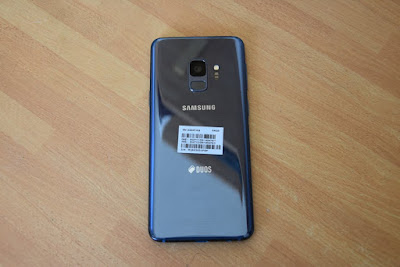The new Galaxy S9 and S9 + are a reflection of their predecessors, the S8 and S8 +. They go so far as to share the same battery capacity: 3000 mAh for the S9 and 3500 mAh for the Plus version. Our question is: what is the impact of increasing the power of devices on autonomy? Let's analyze in more detail the battery of S9 and S9 + to really see what comes out.
The autonomy of Samsung's new flagship smartphones leaves something to be desired
Let's be honest, that's not what we expected. When Samsung unveiled the details on the battery of its new high-end smartphones, we were taken of a huge doubt. The specialist press and the users know what happens when you put a more powerful processor without increasing the capacity of the battery. This is what happened to Huawei between the P9 and the P10, with a significant decline in autonomy despite a slight increase in battery.
Let's see in more detail how the new hardware of the S9 and S9 + affects their performance.
AndroidPIT samsung galaxy s9 plus 0782a
The Always On screen consumes almost 10% of the battery. © AndroidPIT by Irina Efremova
The autonomy of the S9 passes without problem the 12 hours in moderate load
The S9 ships an Exynos 9810 processor (Snapdragon 845 for the USA) with 4 GB of RAM and 3000 mAh of battery. This Exynos processor gives S9 and S9 + better overall performance than the previous generation. With more computing power than the Galaxy S8 and the same battery, the S9 can hold between 12 and 16 hours, with just over 4 hours of screen usage. These values are those of a moderate daily use, with videos (more than one hour), games (more than one hour), messages and mails, a little geolocation and a lot of navigation on the web.
For these results, an optimized mode is used (recommended by Samsung), with automatic brightness and FHD + screen resolution. When launching a game, the screen changes to WQHD + resolution and increases the brightness by 10% to allow a more suitable display.
AndroidPIT Samsung Galaxy S9 test battery
Here is the use of the battery with Full-HD + resolution. © AndroidPIT
In less conventional situations where the smartphone is not used much, the battery can exceed 18 hours, but with only 2 hours and a half of use of the screen. For my part, in terms of hours of use of the screen, the maximum I could reach was 6 hours watching movies and videos.
The processor may be more efficient than its predecessor, but it is also more powerful, and energy consumption has inevitably increased. The reduction in autonomy is significant when we see that the S8 could hold about 6 hours in use.
The autonomy of the S9 + is no surprise, 3 hours of use of the screen at the maximum resolution
The S9 and S9 + are equipped with the same processor, but the Plus version is accompanied by 6 GB of Ram and a 3500 mAh battery. In terms of autonomy, the difference is almost im- possible. The S8 + offers a daytime battery life of around 12-16 hours, like the S9. A comparison that does not honor the S9, since the S8 + could reach 5-7 hours of screen usage with WQHD + resolution enabled.
As seen in the screenshots of my colleague Luca Zaninello, the use of the screen does not exceed 4 hours in WQHD +. For a similar use to Luca's S9 +, the Pixel 2 XL reaches almost 7 hours of screen use.
Do smartphones load at least quickly?
Yes it is. The charge is as fast as the discharge (note the irony). More seriously, the fast charge remains excellent on both models. The battery charges very quickly in the first minutes, although it takes about an hour and a half to reach 100%. An important point: the charger is small is easy to carry, especially when compared to the "The Dash" OnePlus (even if the latter is a hair faster). In the following table, we compare the recharge with the necessary time. The more horizontal the curve, the faster the load.
The best option for charging the S9 and S9 + is probably wireless fast charging. With a charger at the office and another at home, it is possible to ask a few minutes from time to time to grapill precious percentages that will mitigate very significantly the weaknesses of the battery.
Conclusion: smartphones that hold a day, provided they use them moderately
The high end of Samsung vintage 2018 can survive a day of use. But it's not a 24-hour day; rather average time spent awake in a day. This is the case with the optimized mode. If we want more performance or better resolution, the battery life is drastically reduced.
The S9 and S9 + embody various energy saving options that can increase a little performance, but it will sacrifice some premium features (such as the fabulous performance of the smartphone or its excellent screen resolution). A bit light for high-end devices like the Galaxy S9 and S9 +.
Yes, The Galaxy S9 and S9+ batteries are disappointing
 Reviewed by WhatsApp Group links
on
April 03, 2018
Rating:
Reviewed by WhatsApp Group links
on
April 03, 2018
Rating:
 Reviewed by WhatsApp Group links
on
April 03, 2018
Rating:
Reviewed by WhatsApp Group links
on
April 03, 2018
Rating:









No comments: